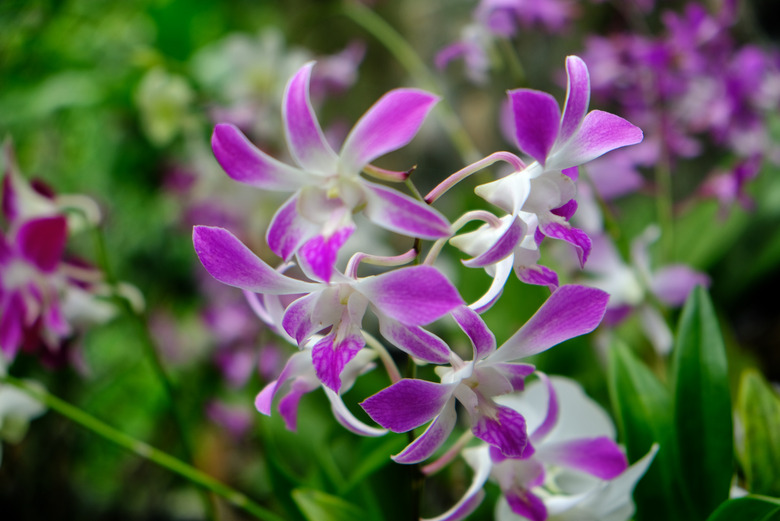How To Care For An Orchid Tree
We may receive a commission on purchases made from links.
Also called ebony trees, orchid trees (Bauhinia spp.) are perennials in U.S. Department of Agriculture plant hardiness zones 9 through 11. Learning how to care for an orchid tree can help you keep yours thriving for years to come.
While many beautiful things may tend to also be high-maintenance, orchid trees are a notable exception. Once they are established, orchid trees become low-maintenance ornamental additions to the landscape. Give them reasonably well-drained soil in a moderate climate and orchid trees will typically grow quickly and thrive. They prefer to grow in sheltered areas to reduce cold and windchill and offer a show of open-throated blooms in return for modest care.
Features of the Orchid Tree
Features of the Orchid Tree
Notable for their showy bloom clusters and two-lobed leaves, orchid trees produce sweet-smelling flowers in white and shades of pink, lavender, purple and magenta. The tree tends to be attractive year-round as it begins blooming slightly before or after losing its leaves.
The Hong Kong orchid tree (Bauhinia blakeana, zones 9b through 11), is evergreen and produces magenta flower clusters. This species is less winter hardy than most of the other orchid trees and may be badly damaged by frost and freezes. All species create debris from falling petals, and the deciduous trees drop leaves. Keep in mind that parts of some orchid tree species are poisonous.
Temperature, Soil, Light and Water
Temperature, Soil, Light and Water
Orchid trees are generally not fans of extreme climates. All varieties of orchid trees do best when protected from temperature extremes. The tree grows fairly fast and prefers mildly acidic, well-drained, loam, sandy or clay soil. It thrives in soil pH 5.5 to 6.5 and prefers full sun or intermittent shade. The tree is drought-tolerant once established, and its need for water can usually be met with seasonal rains. Water periodically during dry periods, but remember that even too much of a good thing can be problematic, so avoid overwatering.
Fertilizing and Protecting Orchid Trees
Fertilizing and Protecting Orchid Trees
Every living thing benefits from a healthy diet and your orchid tree is no exception. Feed your orchid tree general landscape fertilizer in March and June for its first three years, following all label directions. Alkaline soil can cause yellowing foliage. Apply a fertilizer that contains chelated iron to correct this. A common fertilizer for blooming plants containing chelated iron has the same mixing instructions as the general fertilizer, but always be sure to follow the label-specific instructions.
This fuss-free tree doesn't tend to attract pests, although caterpillars may feed on it. If caterpillars cause more holes in the foliage than you can stand, a product containing Bacillus thuringiensis offers an ecofriendly method of control. Use a spray version and apply it where needed.
Trunk and Branch Shaping
Trunk and Branch Shaping
While maintenance levels for your orchid tree are relatively low in comparison to other trees, it could use some help with achieving an ideal shape. For optimum shape and branch strength, the orchid tree requires regular pruning. Sterilize pruning tools before and after use by wiping the blades with isopropyl alcohol.
Prune after the blooms are spent. The tree tends to grow more than one trunk, but you can shape it to have a single trunk by using sterilized loppers to remove the undesired additional trunks. Alternatively, keep three trunks. Prune off low branches to create a higher canopy for a pleasing shape and clearance. Its branches tend to curve down from their own weight and sometimes break. Pruning the branches after each blooming season reduces this tendency.
